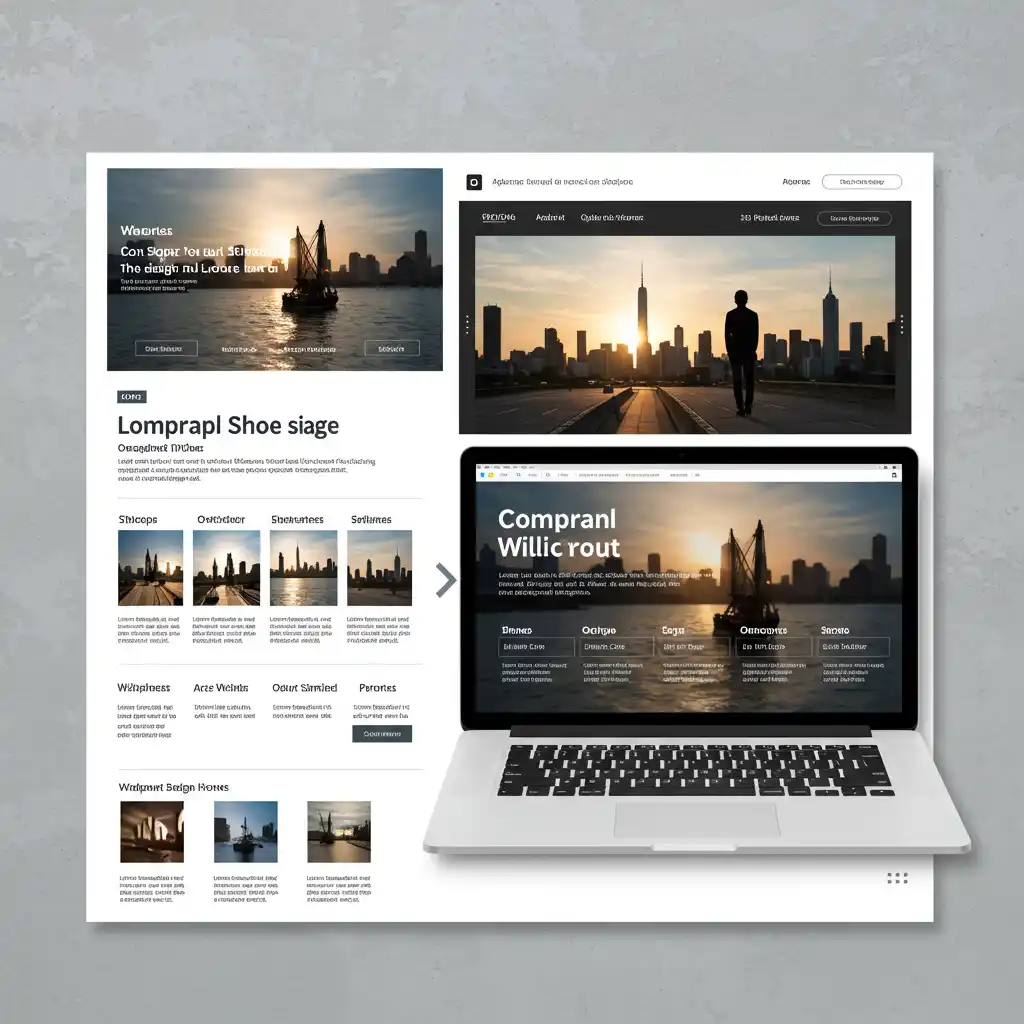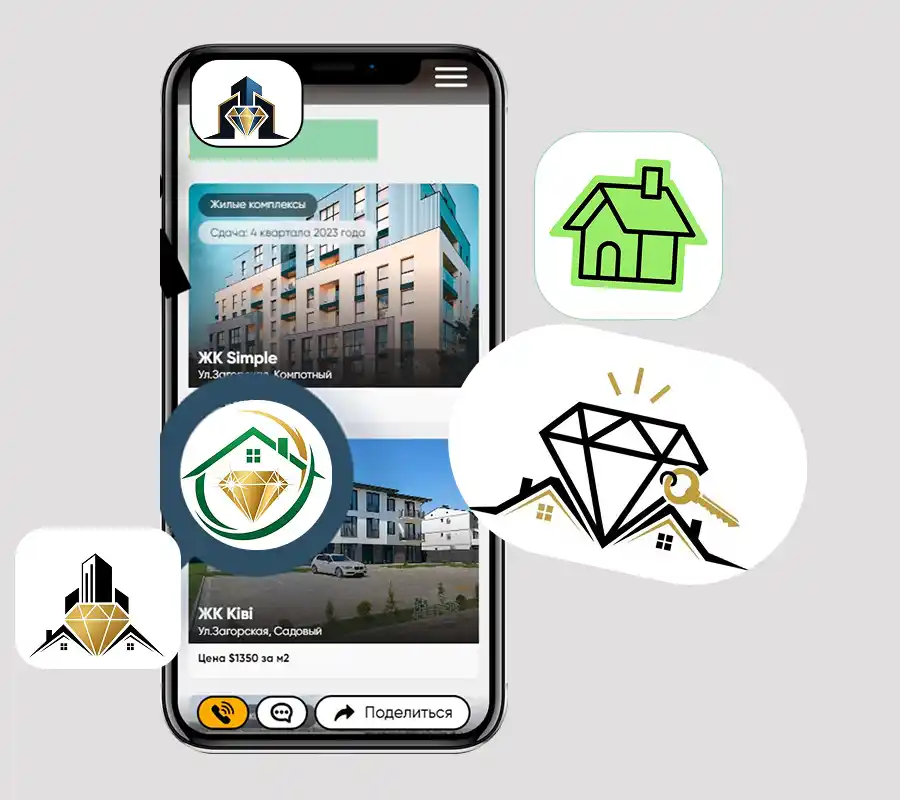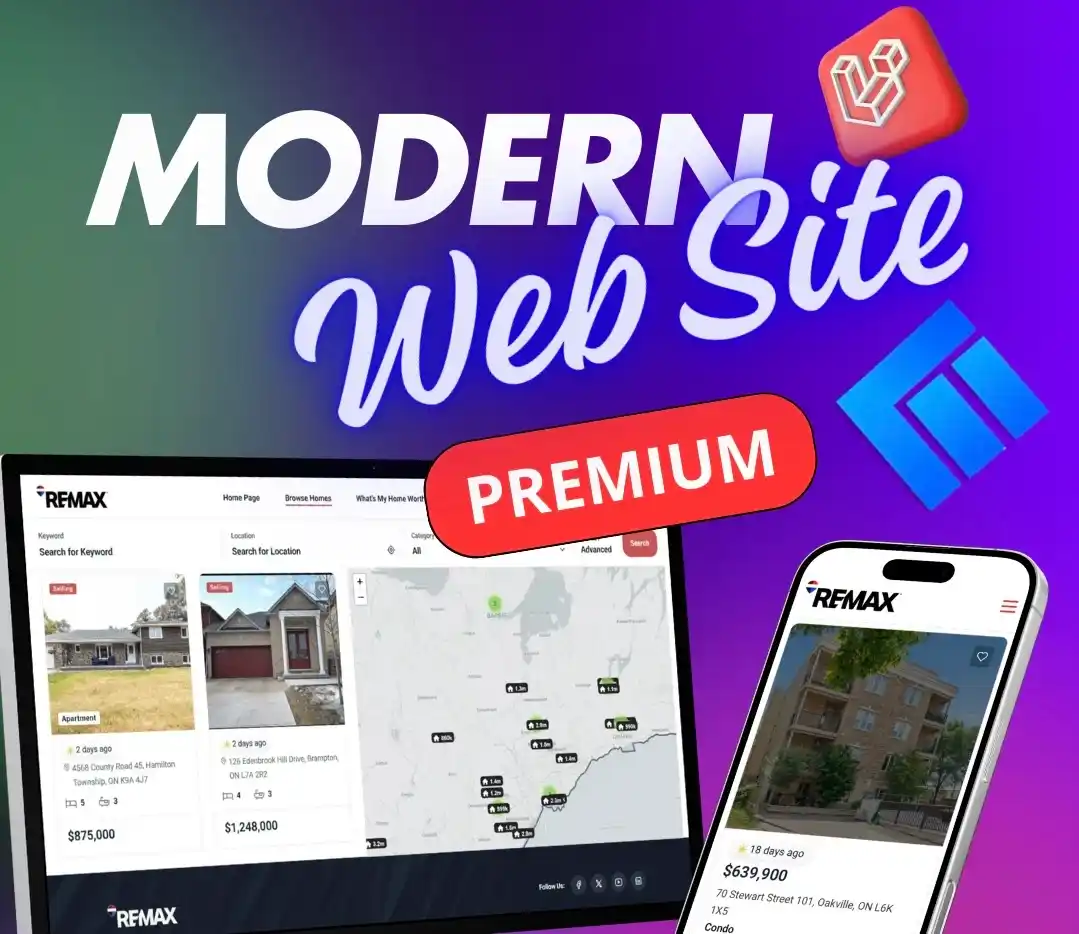

2025-07-08
Your First Website: A Step-by-Step Guide to Creating a Corporate Website from Scratch
Create a Corporate Website from Scratch: Guide
Tags:
In today's digital world, having your own corporate website is no longer a luxury, but a vital necessity for any successful business. It's your online office, business card, platform for communicating with clients, and a powerful tool for attracting new opportunities. But where do you start creating a website from scratch if you're not a web development expert?
This step-by-step guide will help you understand the main stages and make the right decisions on your path to creating an effective business website.
Stage 1: Preparation – The Foundation of Your Online Presence
Before diving into design or code, it's crucial to clearly define what you want from your future website. This stage is critical for success.
- Defining Goals and Target Audience:
- Why do you need a website? Is it an informational resource, a product catalog, a lead generation platform, an online store, or something else?
- Who is your target audience? What are their interests? What problems do they want to solve? How can your website help them? Understanding your audience will influence the design, content, and functionality.
- Key Performance Indicators (KPIs): How will you measure the success of the website? (e.g., number of inquiries, visits, downloads, time on site).
- Competitor Analysis:
- Look at what your competitors are doing. What do you like, and what don't you? What features do they offer?
- Where can you be better or unique? This will help you stand out in the market.
- Content Gathering and Preparation:
- Texts: Information about the company, descriptions of services/products, blog articles, frequently asked questions, testimonials. Write concisely, informatively, and with SEO in mind.
- Visual Material: High-quality photos of your products/services, team, office. Video materials, infographics. Remember that visuals sell.
- Contact Information: Phone numbers, addresses, email, driving directions.
- Choosing a Domain Name:
- This is your website's address on the internet (e.g.,
yourcompany.com.ua). - Choose a name that is easy to remember, read, write, and reflects the essence of your business.
- Check availability in different domain zones (.ua, .com, .biz, etc.).
- Choosing Hosting:
- Hosting is the physical location where your website files will be stored so that it is available 24/7.
- Types of hosting: shared, VPS, dedicated server, cloud. For a first corporate website, shared hosting with good support and sufficient disk space and bandwidth is usually enough.
- Selection criteria: reliability, speed, 24/7 technical support, price, scalability.
Stage 2: Creation – Turning an Idea into Reality
At this stage, we move on to the technical implementation of your website.
- Choosing a Website Creation Platform:
- Content Management Systems (CMS): This is the most popular choice. They allow you to manage website content without knowing programming.
- WordPress: The most popular CMS in the world (used by 43% of all websites). Ideal for corporate websites, blogs, small stores. A large number of themes and plugins.
- Joomla!, Drupal: More powerful and flexible, but require more technical knowledge.
- Website Builders: Tilda, Weblium, Wix, Squarespace.
- Pros: Extremely easy to use, no code required, quick creation.
- Cons: Less flexibility in functionality and design, vendor lock-in, may have SEO limitations. Suitable for very simple one-page sites or landing pages.
- Custom Development: Writing code by programmers.
- Pros: Complete uniqueness, maximum flexibility, high performance.
- Cons: The most expensive and time-consuming process. Recommended for large, complex projects with unique functionality. If you aim to get a unique corporate website, developed taking into account all your needs, you can learn more about the service on the
Confidence Technology corporate website development
For your first corporate website, we recommend considering WordPress as an optimal balance of functionality, simplicity, and cost. - Design and Structure:
- Responsive Design: Your website must be displayed correctly on all devices: computers, tablets, smartphones. Most visitors come from mobile devices.
- Clear Structure: Create a logical hierarchy of pages. The user should easily find the information they need. Typical pages: "Home," "About Us," "Services" / "Products," "Portfolio," "Contacts," "Blog."
- Visual Appeal: Modern, clean design that matches your brand. Use high-quality images and videos.
- Development or Configuration and Content Filling:
- If you chose a CMS, install it on your hosting.
- Select and customize a theme/template that matches your design.
- Install necessary plugins (e.g., for contact forms, SEO, security, galleries).
- Place all prepared content (texts, images, videos).
- Set up feedback forms, CRM integrations (if needed).
- Basic SEO Optimization:
- Meta Tags: Fill in Title and Description for each page, using keywords.
- Headings: Properly use H1, H2, H3 headings.
- Image Optimization: Compress images, add alt attributes.
- Loading Speed: Optimize the site for fast loading.
- SSL Certificate: This is a must-have for security and trust (displayed as "secure" in the browser).
Stage 3: Launch and Support – Your Website Starts Working for You
Once the website is ready, it's time to launch it to the world and ensure its effective operation.
- Thorough Testing:
- Check all links, forms, buttons.
- Test on different devices and in different browsers.
- Make sure all content is displayed correctly.
- Check loading speed using tools like Google PageSpeed Insights.
- Website Launch:
- If you developed the site on a subdomain or test server, transfer it to the main domain.
- Set up DNS records for the domain name to point to your hosting.
- Connecting Web Analytics:
- Install Google Analytics (GA4) to track visitors, their behavior, and traffic sources.
- Set up Google Search Console to monitor search engine indexing and detect errors.
- Maintenance and Updates:
- A website is a living organism. Regularly update your CMS, themes, and plugins for security and stability.
- Create website backups.
- Periodically update content, add new blog articles, and information about services/products.
- Marketing Promotion:
- SEO (Search Engine Optimization): Continue working on improving the site's positions in Google search results.
- Contextual Advertising (Google Ads): Launch ad campaigns to quickly attract targeted traffic.
- Social Networks: Promote the site through your social media accounts.
- Email Marketing: Use email newsletters to inform clients and increase loyalty.
Conclusion
Creating a corporate website from scratch is an exciting journey that requires planning and consistency. It's an investment in the future of your business that will allow you to effectively represent your company online, attract clients, and grow.
Remember that a successful business website is not a one-time project, but a continuous process of development and adaptation to market needs and your audience. If you feel you need professional help at any stage of creating or optimizing your website, do not hesitate to contact experts. You can find the full range of our services in the https://confidence-tech.com/en/service-details/dev-corporate
For IT and marketing companies seeking to expand their opportunities and find new partnerships, we also recommend registering on the Diamond Firms platform
Last News.




_11zon_11zon.webp)

